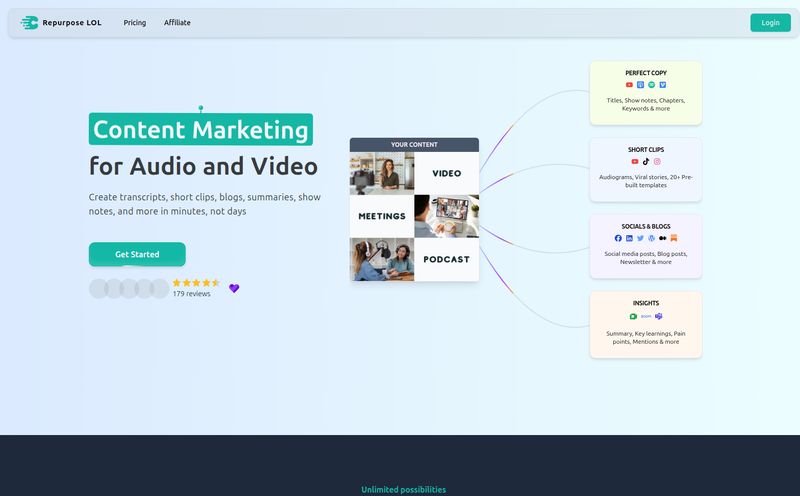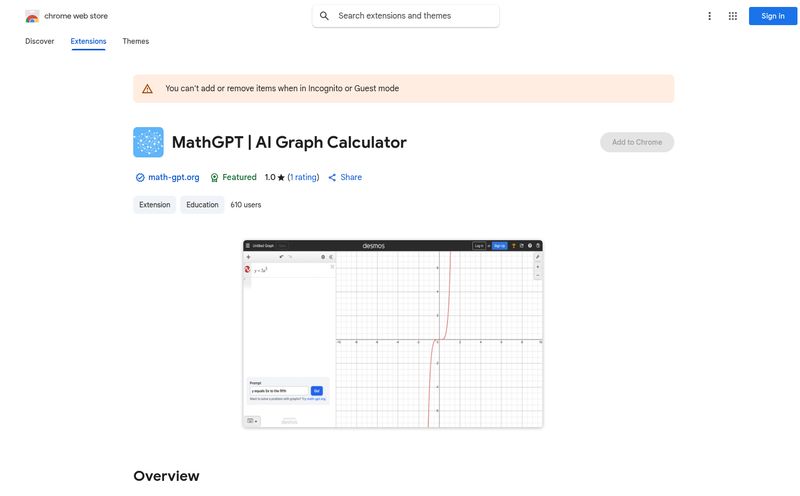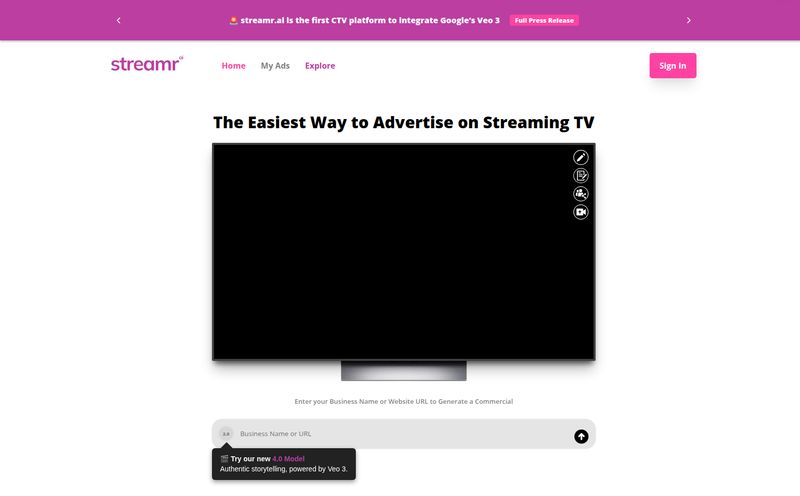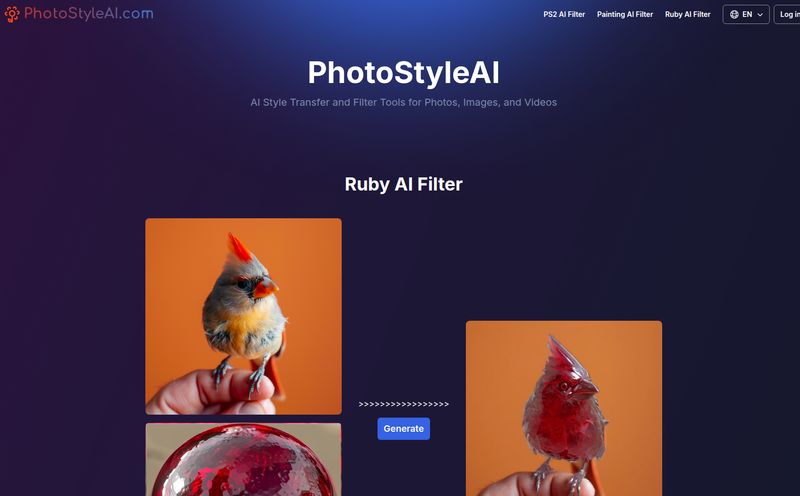The content creation hamster wheel is spinning faster than ever. You’ve got to be on TikTok, on Reels, on Shorts… and every platform wants a slightly different flavor of your video content. The constant demand for more video, better video, faster video... its a lot. For years, I’ve felt like half my job was just being a glorified video converter, chained to Adobe Premiere Pro, painstakingly chopping up long-form content and typing out captions until my fingers went numb.
It's a grind. A real soul-sucking, time-vampire of a task.
So, whenever a new tool pops up promising to automate this whole mess with “AI magic,” my inner skeptic raises a very prominent eyebrow. I’ve seen a dozen of these tools. Most are clunky, inaccurate, or just add another complicated step to the process. But every now and then, one comes along that actually… works. Which brings me to Bytecap. I’ve been playing around with it for a bit, and I have some thoughts. Stick around, because we’re going to figure out if this is just another piece of shiny new tech or a genuine game-changer for creators.
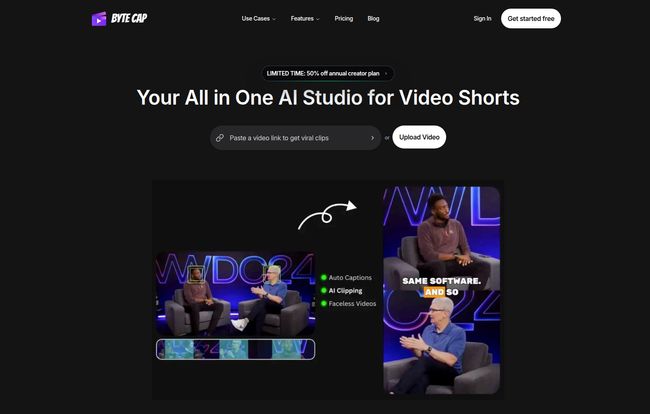
Visit Bytecap
So What is Bytecap, Really?
On the surface, Bytecap bills itself as an “All-in-One AI Studio for Video Shorts.” Strip away the marketing jargon, and what you have is a web-based platform designed to do the most annoying parts of video editing for you. Think of it less as a full-blown editor like Premiere and more like a hyper-efficient assistant. An assistant who’s had way too much coffee and loves doing the repetitive tasks you hate.
Its main purpose is to help you take one piece of content—like a long podcast interview, a webinar, or a YouTube video—and instantly turn it into a bunch of shareable, vertical, captioned clips perfect for social media. It also has a feature to create videos from just a script, which is… interesting, to say the least. We’ll get to that.
My Favorite Bytecap Features (The Ones That Actually Matter)
A tool is only as good as its features. Here’s a breakdown of what I found genuinely useful, and what felt a bit like window dressing.
The Magic of AI Captions
If you’re not captioning your videos in 2024, you're leaving a massive amount of engagement on the table. So many people watch videos with the sound off. But captioning is tedious. Bytecap’s big promise is 99% accuracy with its auto-captions, and honestly? It’s pretty darn close. I fed it a video with some decent audio quality, and it nailed almost everything, even some of the industry-specific jargon I use.
It generates those trendy, word-by-word animated captions (you know the ones, the Alex Hormozi style) that are so popular right now. You can customize the fonts, colors, and animations. This feature alone is a huge time-saver and probably the main reason most people will sign up.
AI Clipping: Your Content Repurposing Machine
For me, this is the killer feature. This is the whole enchilada. You can paste a YouTube link or upload a long video file (up to 2 hours on the paid plans), and Bytecap’s AI will analyze it and suggest a bunch of short, potentially “viral” clips. It looks for the interesting questions, the punchy statements, and the most engaging moments.
Is it perfect? No. Sometimes it picks a weird segment. But it gives you a fantastic starting point. Instead of you having to re-watch a 90-minute podcast to find the 5 best clips, the AI presents you with 10-15 suggestions in minutes. You can then easily tweak the start and end points. This transforms content repurposing from a multi-hour chore into a 20-minute task. That is HUGE.
Creating Videos From Thin Air (Almost)
Now, this is where it gets a little wild. Bytecap has a “Faceless Videos” feature on its Creator and Pro plans. You give it a script, and it generates a video using AI stock footage, images, and an AI-generated voiceover. I have mixed feelings about this. On one hand, it's an incredible tool for people who are camera-shy or want to produce content on topics where they don’t need to be on screen.
On the other hand, the AI voices, while getting better, still have that slightly robotic tinge. And the AI-selected footage can sometimes be a bit… generic. I see this as a great tool for creating simple explainer videos or faceless informational channels, but it won’t replace the authenticity of a real human presenter just yet. Still, pretty cool tech.
Who Is This Tool Actually For?
After using it, I have a pretty clear picture of the ideal Bytecap user. This isn't for the high-end video production agency that needs granular control over every single frame. This is for:
- The Busy Solopreneur: You’re handling marketing, sales, and everything else. You don’t have 8 hours to dedicate to video editing.
- Podcasters: You're sitting on a goldmine of audio content. This is the fastest way I’ve seen to turn your episodes into promotional video clips for social media.
- Social Media Managers: You need to feed the algorithm beast constantly. Bytecap lets you create a high volume of quality content without burning out.
- Educators and Coaches: You can easily clip key lessons from longer lectures or webinars to share as bite-sized tips.
If you value speed and efficiency over painstaking artistic control, Bytecap will feel like a superpower.
Let's Talk Money: The Bytecap Pricing Plans
Ah, the pricing page. The moment of truth for any new tool. Bytecap uses a freemium model with a credit system, which I've always found a bit annoying, but let’s break it down. (Note: Prices seemed to be discounted when I checked, so these might change).
| Plan | Price (per month) | What You Get |
|---|---|---|
| Free | $0 | Good for a test run. Basic features, likely has a watermark and limitations on video length/exports. |
| Lite | ~$9 | 100 credits/month. No watermark, 1080p export. Gets you AI captions and clipping. Perfect for individual creators just starting out. |
| Creator | ~$19 | 200 credits/month. Everything in Lite, plus the 'Faceless Videos' feature (AI Voice, Images, etc.). This is the plan for those wanting to scale with AI-generated content. |
| Pro | ~$47 | 600 credits/month. Everything in Creator, plus 4K exports. This is for power users and small agencies managing multiple accounts. |
The big question is, what’s a “credit”? The site doesn't make it crystal clear, but typically with these tools, one credit equals one minute of video processed. So the Lite plan gives you 100 minutes of video processing a month. For most solo creators, that’s actually a pretty generous amount.
The Not-So-Perfect Parts
No review is complete without a little constructive criticism. Bytecap isn’t perfect. The credit system, as I mentioned, can be a bit confusing if you’re trying to budget your usage. The Faceless Video feature, while powerful, can sometimes produce results that scream “I was made by an AI.” It takes some finessing to get it right.
And, of course, the best features are locked behind the paid plans. The free plan is really just a taster to get you hooked—which is standard practice, but something to be aware of. You'll need to subscribe to get rid of watermarks and unlock the powerful AI clipping from longer videos.
Is Bytecap Worth It? My Final Verdict
So, is Bytecap the magic bullet for going viral? Probably not. No tool can guarantee virality—that still requires a good hook, valuable content, and a bit of luck. But what Bytecap does do, and does incredibly well, is remove the biggest bottleneck in content creation: the editing and repurposing time.
It dramatically lowers the barrier to entry for creating high-quality, engaging short-form video at scale. For the price of a few fancy coffees a month, you're essentially hiring a junior video editor who works 24/7. In my book, that's a fantastic return on investment.
If you're a content creator, podcaster, or marketer who feels like you're drowning in video work, I’d say give the free plan a spin. I have a feeling you’ll be upgrading to a paid plan before the week is out.
Frequently Asked Questions
Is Bytecap free to use?
Yes, Bytecap has a free plan that lets you try out the basic features. However, it comes with limitations, such as watermarks on your videos and restrictions on the length of videos you can upload. To get the full power of the tool, you'll need one of the paid plans.
How accurate are the AI captions?
Bytecap claims 99% accuracy, and from my testing with clear audio, it's very impressive. It's not flawless—it might struggle with heavy accents, background noise, or highly technical terms—but it's far more accurate than many other tools I've tried. You can easily edit any mistakes in the text editor.
Can Bytecap really make my videos go viral?
No tool can promise virality. Going viral depends on your content's quality, your hook, your delivery, and the platform's algorithm. What Bytecap can do is give you the professional-looking tools (like dynamic captions and quick clips) that viral videos often use, and it allows you to produce more content, which increases your chances of one taking off.
What’s the main difference between the Lite and Creator plans?
The biggest jump between Lite (~$9/mo) and Creator (~$19/mo) is the addition of the “Faceless Videos” feature. If you only need to clip your existing long-form videos and add captions, the Lite plan is perfect. If you want to generate entirely new videos from scripts using AI voices and stock media, you’ll need the Creator plan.
Is Bytecap better than other tools like Opus Clip?
That's the million-dollar question! Bytecap and Opus Clip are direct competitors, and both are excellent at AI clipping. The 'better' one often comes down to personal preference in user interface and specific features. I'd suggest trying the free plans of both to see which workflow you prefer. Bytecap's strength seems to be its all-in-one approach, especially with the AI video creation from script.
Conclusion
The creator economy is all about working smarter, not harder. Tools that automate the grunt work are no longer a luxury; they're a necessity for staying relevant and avoiding burnout. Bytecap is a seriously strong contender in the AI video space. It’s fast, it’s intuitive, and it solves a very real, very annoying problem for a huge number of people. It takes the technical headache out of video editing, letting you focus on what you do best: creating great content.
